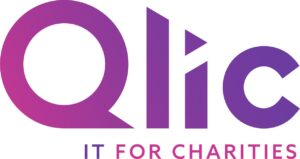Creating a charity and encouraging a large volume of visitors onto your website is one thing, but the real difficulty lies in persuading users to make a donation to your charitable cause. This is known as conversion and it’s only when you start to achieve high conversion rates that your charity website will really be deemed a success. There are a few keys things that you can do to improve conversion rates.
Remember, however charitable the cause, your visitors are pledging their own hard earned money. It’s not just a case of expecting everyone to donate wilfully (although many people do). So if you want to succeed with your charity website, it needs to move away from the ‘sales’ approach. It’s important to remember though that creating an easy-to-use and high converting charity website isn’t difficult. And even better news, once your visitors start donating, research suggests they’ll come back to do so again. So with that said, let’s get your website on the road to bettering conversion rates. Take a look at our top five tips and watch those donations flood in.
Tip No.1: Redesign your website
This can be a hard pill to swallow, especially if you’ve spent many hours improving your website down to the finest detail. The chances are though, if you’re not getting a significant level of donations you may need to give your website a redesign.
But why, I hear you ask. The answer lies in usability and providing the donator with a benefit. Let’s go back to the earlier point – The only benefit they receive from donating to your charity is the ‘act of giving’. Therefore, you need a website that’s easy-to-use and understood by your target audience. Animal websites are a great example of this, especially as parents can adopt an animal for their children. As such, the website needs to cater to both parents and children.
The Blue Cross for Pets charity does a really good job of this. It’s easy for users to get all the information they need on a particular animal, before deciding whether or not to adopt. It’s a user-friendly website that engages with both adults and children alike.
Takeaway Tip: Don’t be afraid to redesign your website in order to improve conversion rates. A better website equals more donations and that’s the overall goal of your charity website.
Tip No.2: Refresh your About Us section
One of the major factors that puts people off donating is knowing how much money really goes towards helping others. This is why the About Us section is one of the most important pages on your website and should not only be easy to locate, but provide the key information users will want.
There’s a need to pack this with information but beware of confusing users so avoid complex reports. As much interactivity as possible is a must, so include images, videos, quotes, and perhaps most importantly, how the money donated is spent. JustGiving take these points and carry them out to an excellent standard. On their fundraising pages they offer pictures, text and a testimonial. This is all easy to take in and isn’t confusing in the slightest.
Takeaway Tip: Create a unique About Us section that really promotes your charity, with videos, images, testimonials and case studies. The more effort you put into this section, the easier it’ll be for donators to discover what you’re all about.
Tip No.3: Create an exciting user experience
The crux of this point is to avoid boring your potential customers. Just imagine, you’re getting users onto your website and engaging with them in a friendly manner, only to lose out when it’s time to part them from their money.
Make everything as clear as can be and this way you’ll also ensure people don’t become confused and look elsewhere to donate. All websites have the same functionalities and means of persuasion, so it really comes down to how you sell your charity to the audience. Cancer Research ensure it’s really simple for people to donate to their cause and not only have a standout ‘donate’ button, but ensure the page is clear at the same time.
Takeaway Tip: Make sure your charity website isn’t confusing and ensure everything can be located quickly and easily. Utilise an easy-to-find donation button and employ a simple, yet effective navigation system.
Tip No.4: Diversify and give people choice
Although the Internet does have it’s advantages and can quickly provide people with useful information and effectively engage, many people still have worries about entering their details online. Bank account numbers and sort codes in particular are secure details that people may not want to disclose online, so always have a back-up plan.
There are many other ways someone can donate, including via text message or with a quick phone call. These are deemed as safer measures to donate, but just ensure to highlight full costs involved. The Internet does offer a way for you to capture user details though, so use this opportunity to get as many email addresses as you can. This could be through the donation page, or even with pop-ups. When you have these emails, don’t be afraid to make the most of them. Send out email campaigns and further encourage donations in a friendly manner.
Takeaway Tip: By giving your donators choice, you’ll strengthen the chance of a donation. Don’t put them off by providing just one straightforward payment option and try to maximise the amount of ways your customers can donate.
Tip No.5: Allow a natural journey for donators
Donating is a charitable cause; there are no two ways about it. But despite the ‘feel-good’ factor it can achieve, many people will still be wary of donating, especially if it’s their first time. For this reason, allowing users to naturally engage with your website is vital and pushing people towards a donation too early can be detrimental to your success. As such, making sure you address your user’s main questions throughout the website with a natural path, will increase conversion rates.
Use analytics to assess which pages are of lead value to your audience and direct them to these first, before pushing the call to actions and donation buttons. Of course, it doesn’t hurt to create a main donation button on the homepage, acting as a quick and easy way for users to immediately donate if they wish. On the Macmillan website it’s easy to find the donate button if necessary, but the important point to make is it’s not dominating the screen. Instead, the eye will naturally start on the left-hand-side, where the menu bar leads users to a variety of information pages.
Takeaway Tip: Don’t press too hard for a donation. Instead, allow a natural journey for the visitor whereby they can gather as much information as needed first. Keep a prominent donation button for those who are pledging money on a whim, but cater for those that need a little more persuasion too.
Qlic have extensive experience working with charities on their websites. If you would like to know more about how we could help your charity get in touch with us today on 0203 904 3464 or [email protected]. For more information visit our website design and digital marketing section.






